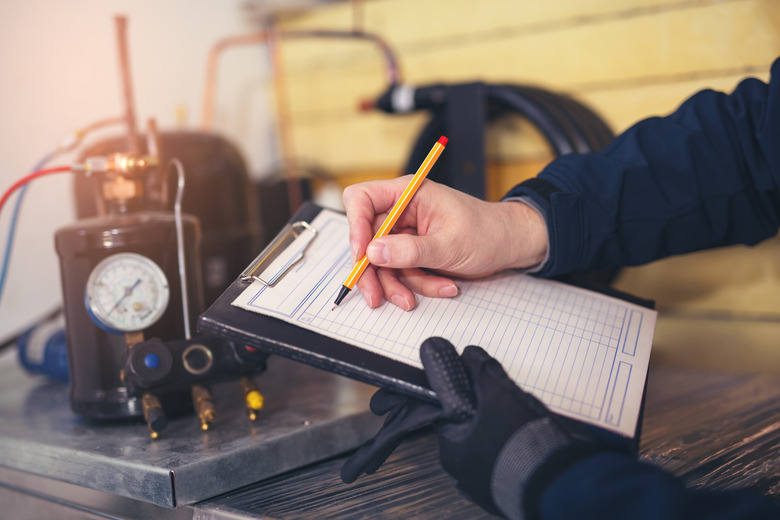Normal Running Pressures For R134A
As an air-conditioning refrigerant in newer automobiles, the optimal running pressure for R134A is between 22 and 57 pounds per square inch. Ass a refrigerant, a liquid capable of vaporizing at low temperature, used in automotive air conditioning, the U.S. Environmental Protection Agency, states that R134A is not flammable at ambient temperatures and not corrosive to metals such as aluminum, copper and stainless steel.
Pressure Temperature Chart
Pressure Temperature Chart
Like other refrigerants, the pressure of R134A corresponds to its temperature. You can determine the refrigerant pressure at any temperature between −22 and 202 degrees Fahrenheit by reading the value from a pressure temperature chart.
Temperature Difference
Temperature Difference
In a high-temperature refrigeration box, where temperatures typically range from 45 to 60 degrees Fahrenheit, the coil temperature is, typically, between 10 and 20 degrees Fahrenheit colder than the box itself. This difference is simply known as the temperature difference.
Normal Running Pressure
Normal Running Pressure
For the normal running pressure in an R134A system, the coil should run at 22 pounds per square inch at the lowest temperature, 45−20 = 25 degrees Fahrenheit. Similarly, at the highest temperature, 60−20 = 40 degrees Fahrenheit, the coil should run at 57 psi. In other words, the normal running pressure of R134A is between 22 and 57 psi in such a system.
Cite This Article
MLA
Dunning, David. "Normal Running Pressures For R134A" sciencing.com, https://www.sciencing.com/normal-running-pressures-r134a-8003413/. 13 March 2018.
APA
Dunning, David. (2018, March 13). Normal Running Pressures For R134A. sciencing.com. Retrieved from https://www.sciencing.com/normal-running-pressures-r134a-8003413/
Chicago
Dunning, David. Normal Running Pressures For R134A last modified August 30, 2022. https://www.sciencing.com/normal-running-pressures-r134a-8003413/
